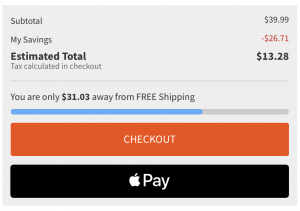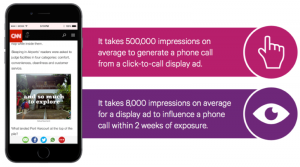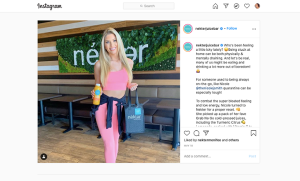
When it comes to developing high quality content, you’re ultimately writing for two different, yet related audiences.
- Search engines. The first audience consists of search engines. This is where SEO comes into play. In order to satisfy the demands of the search engines, you have to focus on things like long tail keywords, trending topics, and semantics.
- Human readers. The second audience consists of the human readers that use the search engines to find the content they’re looking for. In order to satisfy the demands of your readers, you must speak to their wants, needs, desires, and pain points.
don’t forget
about
your human readersWhile both are extremely important – and there’s already a ton of information about enhancing the SEO technicalities of content – it’s important that you don’t forget about your human readers.
Forget about our readers? We would never do that!
Is that what you’re thinking? Well, if you don’t have a detailed reader persona for your content marketing efforts, then you aren’t really putting your readers first.
Five Steps To A Powerful Reader Persona
A reader persona is more than some marketing document that your company requires you to fill out and stash in a filing cabinet. A reader persona should be a valuable resource that allows you to understand your reader and tailor content to their preferences and needs. (As a side note, you’ll probably have more than one persona.)

There are many different formulas for reader personas, but here are some of the things you should definitely be including in your template.
1. Basic Demographic Information
You’re trying to get as detailed as possible with a reader persona. That’s why you need to start with demographic information. These are details about things like location, gender, age, relationship status, income, educational level, etc. You can find this information a number of ways, including from Google Analytics, census data, customer service records, and social media.
If your blog or website already generates healthy traffic numbers, Google Analytics is probably the first tool to start with. To enable demographics and interest reports, simply sign in, select the admin tab, and set Enable Demographics and Interest Reports to the “On” setting.
Once enabled, you can play around with different settings and tabs to get an idea of age and gender distributions. But perhaps most interesting is the fact that you can see what your audience is interested in elsewhere on the internet. You’ll be given a “top 10 summary” in different categories and can then combine this information for a well-rounded picture of who your ideal reader is.
Since you need to get specific, you’ll want to make some generalizations and use your findings to create a detailed “prototype.” Drill down until you can say something like: “My average reader is a single Caucasian male who recently graduated from college, lives in the Midwest, and makes $50,000 per year.” Will every reader meet these criteria? No – but it’s a simple way to add some focus to your writing.
2. Values And Fears
Beyond a reader’s obvious traits, you need to know what makes them tick. You’ll have to make some assumptions, but identifying values and fears can really help you identify what’s happening beneath the surface.
Using our previous example, your average reader may value their freedom and enjoy bringing in a steady paycheck. However, at the same time, they may worry about being able to climb the corporate ladder so that they can put some money away in savings and buy a house, get married, etc.

Are you familiar with the VALS model/framework? This acronym stands for “Values, Attitudes, and Lifestyles” and was developed in 1978 by social scientist Arnold Mitchell and his colleagues. It’s a system for grouping consumers according to their sociological and psychological theories in order to predict how they’ll respond to products, advertising, marketing, etc.
The VALS model says that every adult American fits into one of nine categories: belongers, achievers, emulators, societally conscious, sustainers, experiential, I-am-me, survivors, and integrated. If you can figure out which category your target reader fits into, you’ll be able to shape your content accordingly.
3. Specific Goals And Challenges
Which goals and challenges do your readers have? Do they want to earn $100,000 per year, have job flexibility, and eventually have children? As far as challenges, do they see high taxes and student loan debts as issues?
While this information may not seem pertinent to you, it will ultimately influence the content you write. For example, if you’re a clothing boutique, then having the knowledge that finances are tight and customers are trying to cope with crippling student loan payments can tell you that content should be centered on budget-friendly products.
The best way to understand your target audience’s goals and challenges is by reading blog comments, mining their social media profiles, reading through customer service logs, and identifying the types of content they share. People like to talk about things that excite or frustrate them, so you can gain some powerful insights by digging beneath the surface.
4. Your Value Proposition Or Pitch
Once you have some basic information and assumptions in place, you need to consider your company’s value proposition – or elevator pitch – as it relates to their needs. You don’t have to overtly list this value proposition anywhere on your site, but it should be in the back of your mind any time you’re writing.
The value proposition typically compliments the individual’s goals and challenges. It’s the answer to their problems and ultimately will shape the direction of your content moving forward. In other words, your value proposition is the thing your readers are grasping for. Here’s a good guide on how to write value propositions for your target persona.
5. Goal Of Content
Finally, there needs to be a specific goal for your content as it pertains to each individual reader persona. There’s a big difference between writing to raise awareness about an issue and writing to directly drive sales. What are you trying to do and how will you move your readers to action?

This ties in with the value proposition. For each reader persona you have, there needs to be an attached content goal. For one reader persona, the goal may be to get them to subscribe to an email list. For another persona, it may be to funnel the reader to a landing page and make a sale. Goals differ based on the target, but need to be included in the persona itself so that all writers are clear of the underlying purpose behind the content.
How To Use Your Reader Persona
Once you have your reader personas developed, you need to familiarize yourself with them. In order to personify these personas, many marketers and writers will find a picture and paste it into the persona document. This gives a face to the persona and creates a stronger bond.
Any time you’re writing content, you need to have one of your personas in mind. Pull up the persona document – better yet, print it off and stick it on your bulletin board – and actually pretend that this is the individual you’re writing to. What values, fears, goals, and challenges do they have? Touch on these and then clearly explain how your value proposition interacts with them.
Put The Reader First
You certainly don’t want to forget about the SEO aspects of effective content marketing, but you also need to pay attention to the readers. One way you can do this is by creating very specific personas that allow you to effectively target the people that matter to your company. It’s time to get started!
* Adapted images: Public Domain, pixabay.com via getstencil.com
A Step-By-Step Guide To Crafting High-Returning Reader Personas
The post A Step-By-Step Guide To Crafting High-Returning Reader Personas appeared first on Search Engine People Blog.
(72)








